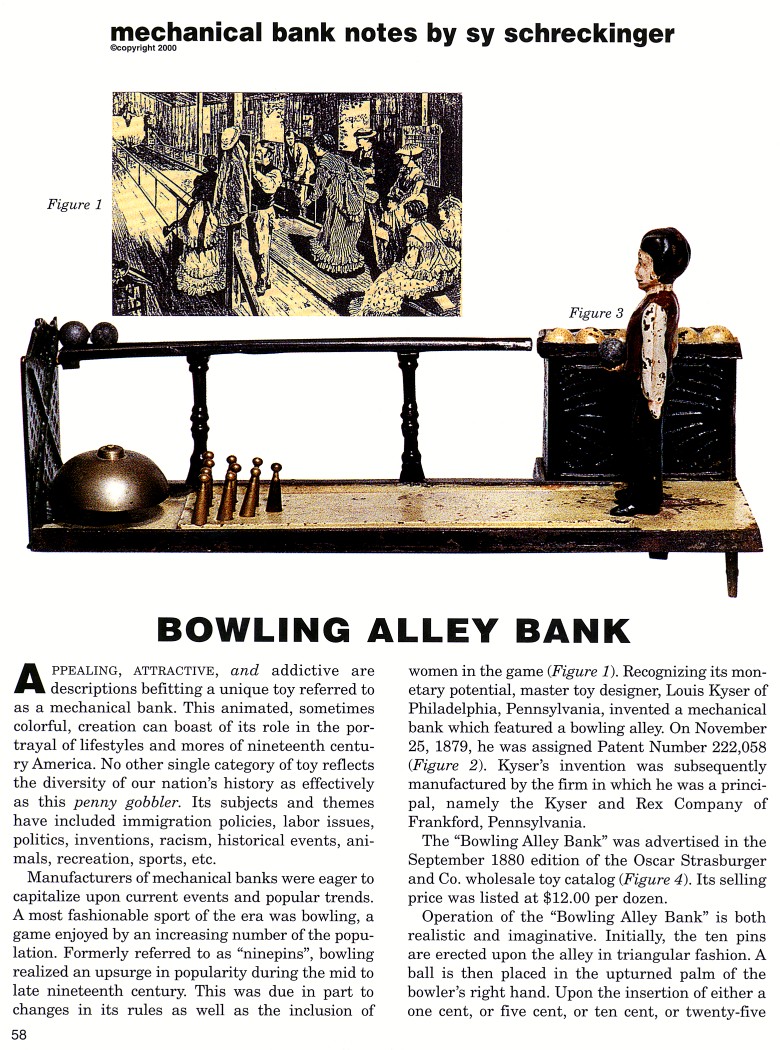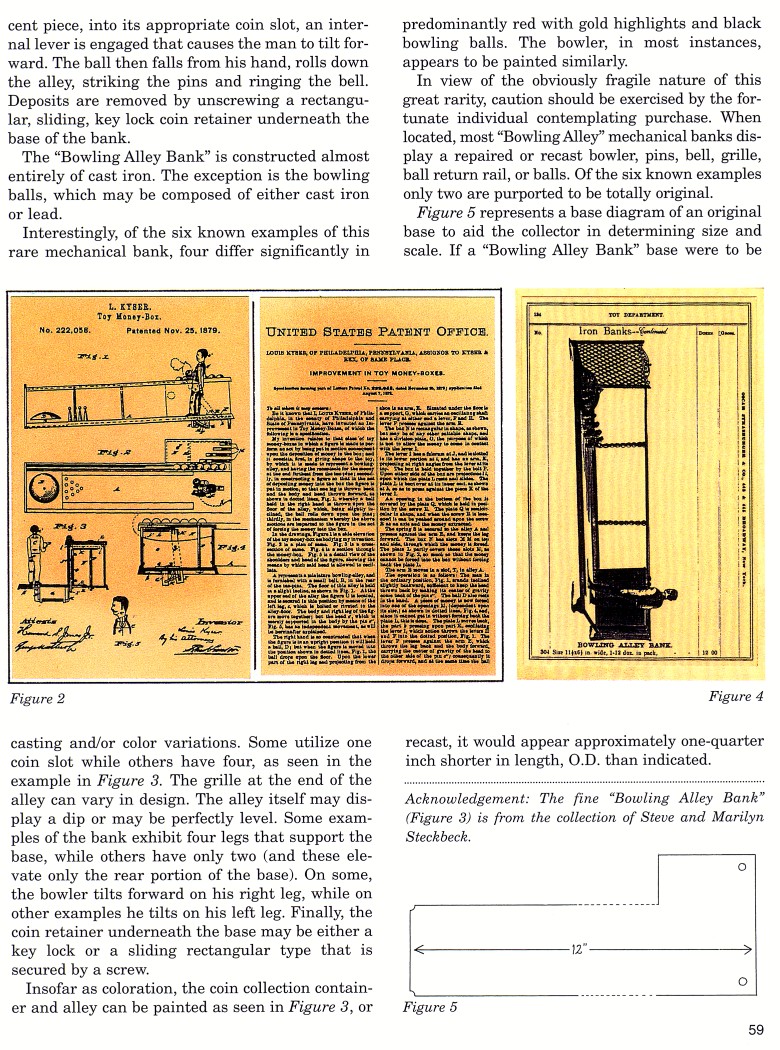|
Bowling Alley Bank
by Sy Schreckinger – ANTIQUE TOY WORLD Magazine – February,
2001
Appealing, attractive, and addictive are
descriptions befitting a unique toy referred to as a mechanical bank. This
animated, sometimes colorful, creation can boast of its role in the
portrayal of lifestyles and mores of nineteenth century America. No other
single category of toy reflects the diversity of our nation's history as
effectively as this penny gobbler. Its subjects and themes have included
immigration policies, labor issues, politics, inventions, racism,
historical events, animals, recreation, sports, etc.
Manufacturers of mechanical banks were eager to capitalize upon
current events and popular trends. A most fashionable sport of the era was
bowling, a game enjoyed by an increasing number of the population.
Formerly referred to as "ninepins", bowling realized an upsurge in
popularity during the mid to late nineteenth century. This was due in part
to changes in its rules as well as the inclusion of women in the game
(Figure 1). Recognizing its monetary potential, master toy designer, Louis
Kyser of Philadelphia, Pennsylvania, invented a mechanical bank which
featured a bowling alley. On November 25, 1879, he was assigned Patent
Number
222,058 (Figure 2). Kyser's invention was subsequently manufactured
by the firm in which he was a principal, namely the Kyser and Rex Company
of Frankford, Pennsylvania.
The "Bowling Alley Bank" was advertised in the September 1880 edition
of the Oscar Strasburger and Co. wholesale toy catalog (Figure 4). Its
selling price was listed at $12.00 per dozen.
Operation of the "Bowling Alley Bank" is both realistic and
imaginative. Initially, the ten pins are erected upon the alley in
triangular fashion. A ball is then placed in the upturned palm of the
bowler's right hand. Upon the insertion of either a one cent, or five
cent, or ten cent, or twenty-five cent piece, into its appropriate coin
slot, an internal lever is engaged that causes the man to tilt forward.
The ball then falls from his hand, rolls down the alley, striking the pins
and ringing the bell. Deposits are removed by unscrewing a rectangular,
sliding, key lock coin retainer underneath the base of the bank.
The "Bowling Alley Bank" is constructed almost entirely of cast iron.
The exception is the bowling balls, which may be composed of either cast
iron or lead.
Interestingly, of the six known examples of this rare mechanical
bank, four differ significantly in casting and/or color variations. Some
utilize one coin slot while others have four, as seen in the example in
Figure 3. The grille at the end of the alley can vary in design. The alley
itself may display a dip or may be perfectly level. Some examples of the
bank exhibit four legs that support the base, while others have only two
(and these elevate only the rear portion of the base). On some, the bowler
tilts forward on his right leg, while on other examples he tilts on his
left leg. Finally, the coin retainer underneath the base may be either a
key lock or a sliding rectangular type that is secured by a screw.
Insofar as coloration, the coin collection container and alley can be
painted as seen in Figure 3, or predominantly red with gold highlights and
black bowling balls. The bowler, in most instances, appears to be painted
similarly.
In view of the obviously fragile nature of this great rarity, caution
should be exercised by the fortunate individual contemplating purchase.
When located, most "Bowling Alley" mechanical banks display a repaired or
recast bowler, pins, bell, grille, ball return rail, or balls. Of the six
known examples only two are purported to be totally original.
Figure 5 represents a base diagram of an original base to aid the
collector in determining size and scale. If a "Bowling Alley Bank" base
were to be recast, it would appear approximately one-quarter inch shorter
in length, O.D. than indicated.
Acknowledgement: The fine "Bowling Alley Bank" (Figure 3) is from the
collection of Steve and Marilyn Steckbeck.
|


